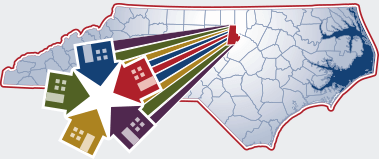Rental Assistance Demonstration Program (RAD)
RAD was created in order to give public housing authorities (PHAs) a powerful tool to preserve and improve public housing properties and address the $26 billion dollar nationwide backlog of deferred maintenance.
Before RAD:
- Properties are typically not funded at 100% in Public Housing.
- In Public Housing, PHA's cannot borrow money to perform necessary repairs.
- The funding fails to keep up with the deteriorating living conditions of residents.
- Residents cannon choose to move without losing housing assistance.
After RAD
- Properties are placed on a more stable Section 8 funding platform.
- PHA's and owners can more easily borrow money and perform rehabilitation work.
- The living conditions of residents are improved.
- Residents may receive a tenant-based voucher, or similar assistance, and move after 1 year in PBV and 2 years in PBRA.
Since RAD started, $4 Billion in Construction has been achieved. For more information about the Rental Assistance Demonstration program, please visit https://www.hud.gov/RAD.
Five things residents should know about Public Housing Conversions
- RAD allows public housing agencies to leverage public and private debt and equity in order to reinvest in the public housing stock. This is critical given the backlog of public housing capital needs - estimated at over $35 billion.
- In RAD, units move to a Section 8 platform with a long-term contract that, by law, must be renewed in perpetuity. A Use Agreement is also recorded under RAD further enforcing HUD's long-term interest. This ensures that the units remain permanently affordable to low-income households.
- Residents benefit from a right of return, a prohibition against re-screening, and robust notification and relocation rights. Residents continue to pay 30% of their adjusted income towards the rent, maintain the same basic rights as they possess in the public housing program, and gain a new option to request tenant-based assistance if they wish to subsequently move from the property.
- RAD maintains the ongoing public stewardship of the converted property through clear rules requiring ongoing ownership or control by a public or non-profit entity.
- RAD is highly cost-effective, relying on shifting existing levels of public housing funds to the Section 8 accounts as properties convert.
RAD Frequently Asked Questions (FAQs) for DHA Residents
DHA's Project-Based Rental Assistance (PBRA) Developments
Vouchers are attached to units in a building and stays with the unit even after a tenant moves out. Some PBRA Developments will also have Tax Credit program attached to it. Applicants must meet the Tax Credit income limits as well to be eligible.
- Calvert Place*
- Total Units: 75
- RAD Units: 43
- Closing Date: Nov 2017
- Holman Homes*
- Total Units: 83
- RAD Units: 46
- Closing Date: Nov 2017
- Main Street Townhomes*
- Total Units: 43
- RAD Units: 21
- Closing Date: Nov 2017
- Morning Glory Senior Villages*
- Total Units: 25
- RAD Units: 25
- Closing Date: Nov 2017
- Edgemont Elms
- Total Units: 58
- RAD Units: 16
- Closing Date: Dec 2017
- Damar Court
- Total Units: 102
- RAD Units: 102
- Closing Date: Dec 2017
- Morreene Road
- Total Units: 224
- RAD Units: 224
- Closing Date: Dec 2017
*HOPE VI Developments


